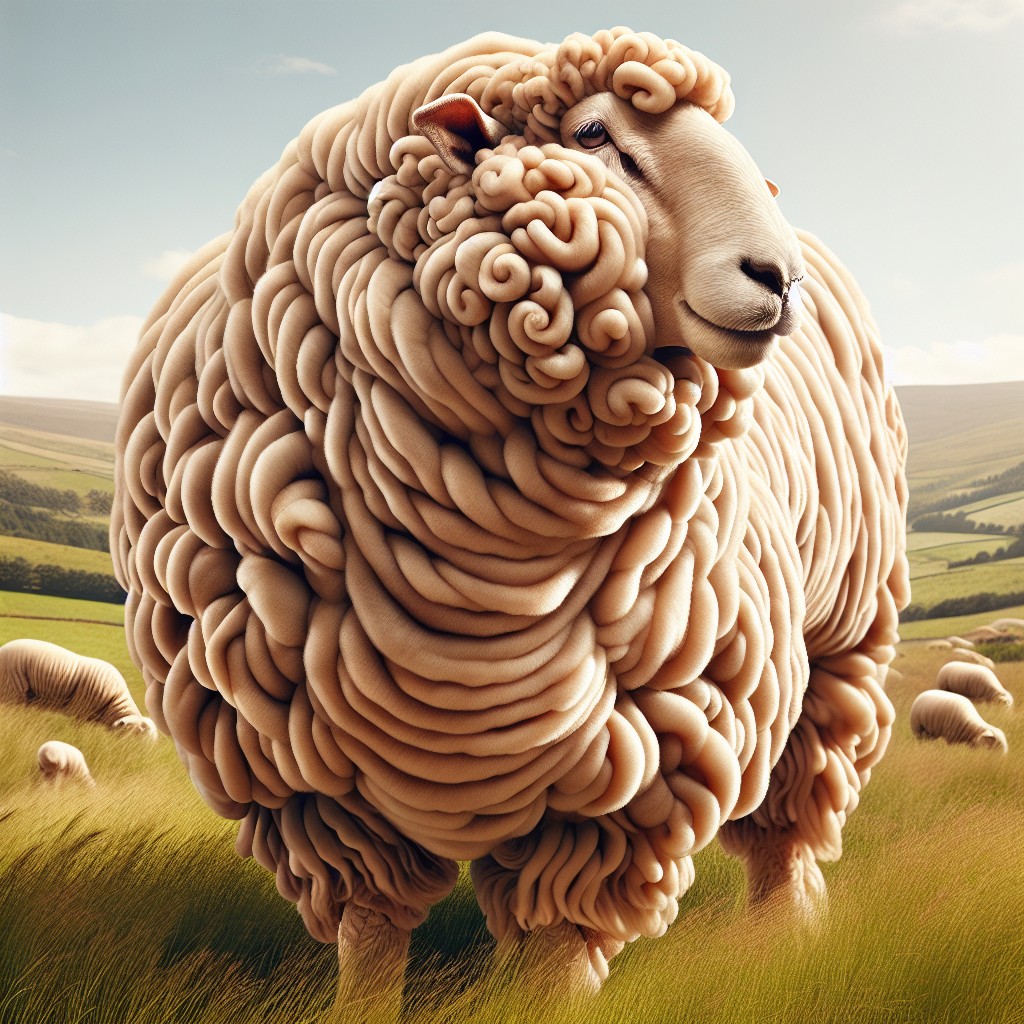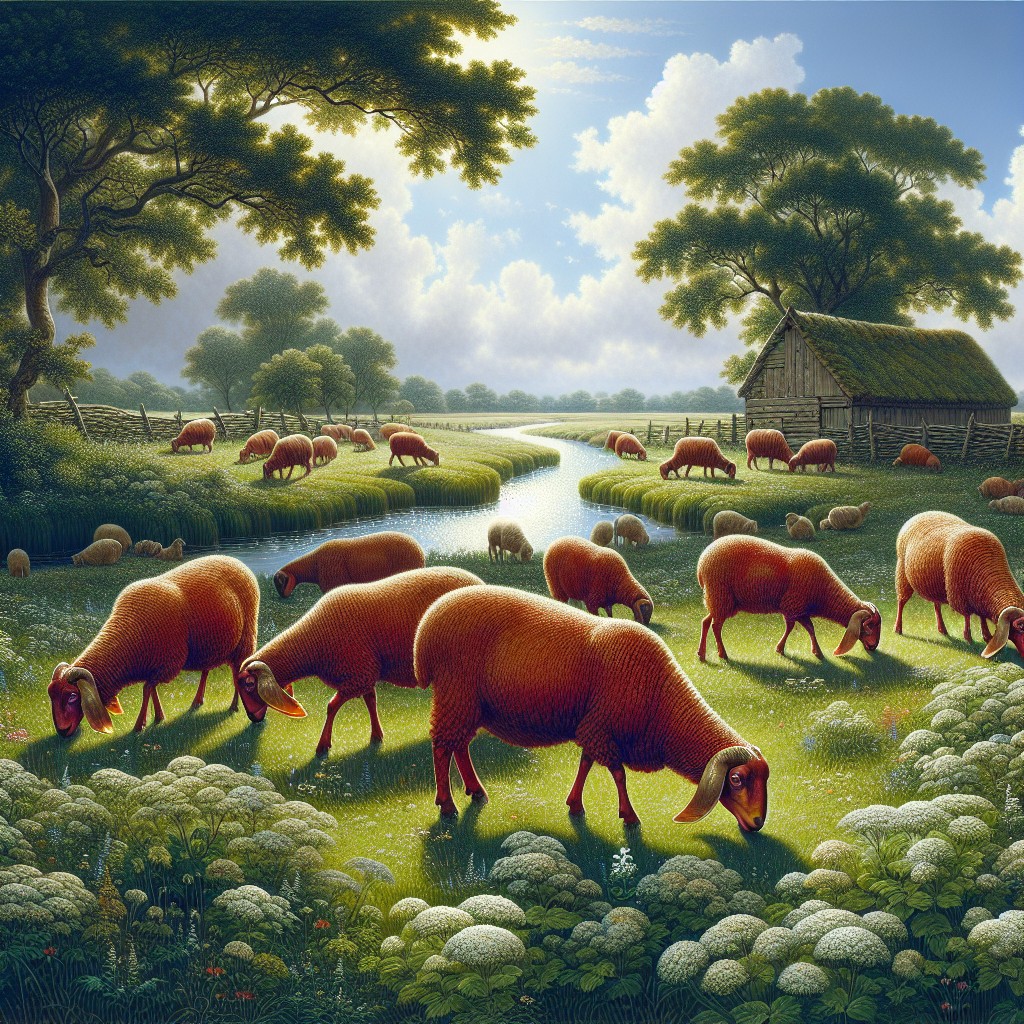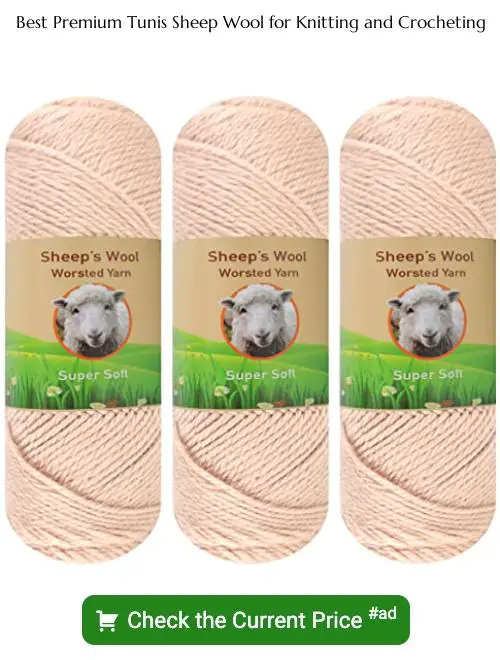Dive into the world of American Tunis sheep and discover why their wool is uniquely suited for knitting and crocheting projects.
Key takeaways:
- American Tunis sheep descended from ancient fat-tailed sheep.
- Tunis sheep are versatile and cost-effective for meat production.
- Tunis wool is medium-grade with a versatile staple length.
- Tunis sheep have a distinctive physical appearance.
- Breed associations support the conservation and promotion of American Tunis sheep.
Origin and History

Descending from ancient fat-tailed sheep once reared in the Middle East and North Africa, the American Tunis is a unique blend of Old World genetics and New World refinement. The breed was established in the United States during the late 18th century and quickly became popular for its adaptability and the quality of its meat.
George Washington himself was instrumental in its proliferation; he received a gift of Tunis sheep from the Bey of Tunis, aiding in the dispersion of the breed. The Civil War nearly decimated the population, but a concerted effort by dedicated breeders in the late 19th and early 20th centuries facilitated a successful revival.
As a living piece of American history, these sheep continue to be celebrated for their mild temperament, efficiency in conversion of feed to meat, and their ability to thrive in various climates. This historical journey contributes to their status not just as livestock, but as an emblem of American agricultural heritage.
Economic Utility

Tunis sheep are renowned for their versatile economic contributions to farms and homesteads. Their adaptability to diverse climates and foraging prowess make them cost-effective for meat production. The breed’s meat is known for its tender and flavorful qualities, catering to niche markets and commanding premium prices. Additionally, ewes exhibit strong maternal instincts and typically have an easy time lambing, further reducing labor and veterinary costs.
In terms of fiber production, the Tunis fleece is highly valued for hand spinning. The wool is medium in grade with a staple length averaging 4 to 6 inches and a micron count that generally ranges from 24 to 30, resulting in a versatile yarn suitable for a variety of projects. Tunis wool takes dye well, enhancing its appeal to artisans and crafters.
Finally, Tunis sheep are often used for conservation grazing, a land management technique that leverages their grazing behavior to maintain and improve biodiversity in certain ecosystems. This role can potentially provide additional income through conservation programs and grants.
Fleece Quality

American Tunis sheep produce a medium-grade wool that is both versatile and highly valued by handspinners and crafters. The fiber diameter generally ranges from 24 to 30 microns, striking a balance between softness and durability. Each fleece weighs between 6 to 8 pounds, offering a generous yield for various projects.
The wool’s crimp is even and well-defined, contributing to the yarn’s elasticity and making it suitable for items that require some stretch, such as hats and mittens. Tunis fleece naturally comes in a variety of colors, with shades from cream to cinnamon, though most commonly found in a warm, creamy white.
The staple length, usually between 3 to 5 inches, is favorable for both hand-spinning and machine processing. The fleece also has a minimal amount of grease, making it relatively easy to clean and prepare for spinning. The inherent loftiness of the fibers lends well to creating airy, insulating fabrics perfect for cozy sweaters and blankets.
Physical Description

Recognizable by their red faces and legs, Tunis sheep carry a distinctive look. Their cream-colored wool provides a stark contrast to the reddish tones of their extremities.
With medium-sized, pendulous ears, they exude a gentle appearance. Ewes typically weigh between 125-150 pounds, while rams are larger, averaging at 175-225 pounds.
Their body structure is robust and well-proportioned, evolved for both meat and wool production. The physical build supports ease of lambing and good mothering capabilities.
Tunis sheep are adaptable to various climates, with a calm demeanor that makes them favorable for handling and management.
Breed Associations and Registries
Breed associations and registries play a crucial role in preserving the lineage, promoting the breed, and providing resources for breeders and enthusiasts of American Tunis sheep. They maintain official records of pedigrees and ownership, which is essential for breed integrity and tracking genetic lines.
Membership often grants access to exclusive educational materials, marketing support, and networking opportunities with other breeders. These organizations also typically host shows and competitions, fostering a sense of community and offering a platform for showcasing quality animals.
Notably, the National Tunis Sheep Registry, Inc. is the primary body dedicated to the registration and promotion of American Tunis sheep. Through their efforts, the registry helps ensure the conservation and growth of the breed, while also serving as a hub for the exchange of knowledge surrounding best practices in breeding, husbandry, and wool utilization.
Tunis Sheep Gallery
Visual references can significantly enhance the understanding and appreciation of the American Tunis sheep breed. A gallery offers insights into the distinct characteristics that mark this breed, such as their reddish faces and legs contrasted against their creamy wool. It’s a showcase where one can view variations in size, conformation, and fleece condition among individual animals, exemplifying the diversity even within a single breed.
Photographs capturing Tunis sheep in different settings—grazing, at shows, or as part of a flock—provide context to their versatility and temperament. Additionally, images of yarn spun from Tunis wool, along with finished crochet or knit projects, can inspire and inform crafters about the texture and drape this fiber offers. For breeders and enthusiasts, a gallery serves as an educational tool and a testament to the breed’s standard and beauty.
American Tunis: Breed Study Results
Recent surveys and evaluations of the American Tunis sheep breed have yielded insightful data beneficial for both shepherds and fiber artists. Key findings include a notable hardiness in the breed, with sheep demonstrating strong adaptability to a variety of climatic conditions across the United States. This trait contributes to their reputation as a low-maintenance breed, suitable for both small-scale and larger agricultural operations.
The breed’s fleece has particularly impressed for its unique qualities: the fiber is medium-grade with a micron count typically ranging from 24 to 30, which strikes a balance between softness and durability. Staple lengths average between 3 to 6 inches, making the wool well-suited for a broad range of yarn crafts.
Furthermore, the study has shown that American Tunis wool possesses a natural elasticity, which is a coveted characteristic for knitters and crocheters seeking yarn that maintains shape and offers comfortable wearability.
Additionally, Tunis lambs demonstrate rapid growth rates and feed efficiency, confirming the breed’s value within the meat production industry. These aspects, alongside the breed’s docile temperament, underline the multifaceted appeal of American Tunis sheep, both as providers of quality wool and sustainable meat produce.
FAQ
Where did the American Tunis come from?
The American Tunis is a breed of sheep that evolved from the crossing of fat-tailed sheep imported from Africa and the Middle East with established European breeds during the late 18th and early 19th centuries.
What is Tunis wool good for?
Tunis wool, a medium, worsted weight, woolen spun, three-ply yarn, is highly suitable for various projects, notably warm hats, mittens, cowls, scarves, sweaters, vests, and ponchos, owing to its exceptional stitch definition and versatility.
How big do Tunis sheep get?
Tunis sheep, being medium sized, typically have rams weighing between 175 and 225 pounds and ewes weighing between 125 and 175 pounds.
Are Tunis sheep good foragers?
Yes, Tunis sheep are known to be excellent foragers.
What are the main characteristics of the Tunis breed of sheep?
The Tunis breed of sheep is known for its red face and legs, robust health, adaptability, and high-quality wool and meat production.
How does the American Tunis breed differ from other sheep breeds when it comes to wool production?
The American Tunis sheep breed is distinct because it produces a medium-wool of creamy color that is highly prized by hand spinners for its unique softness and crimp character.
What is the specific process of collecting and preparing Tunis wool for crafting purposes?
The specific process of collecting and preparing Tunis wool for crafting involves shearing the wool from the sheep, washing the fleece to remove dirt and grease, carding it to untangle and align the fibers, and then spinning it into yarn.





